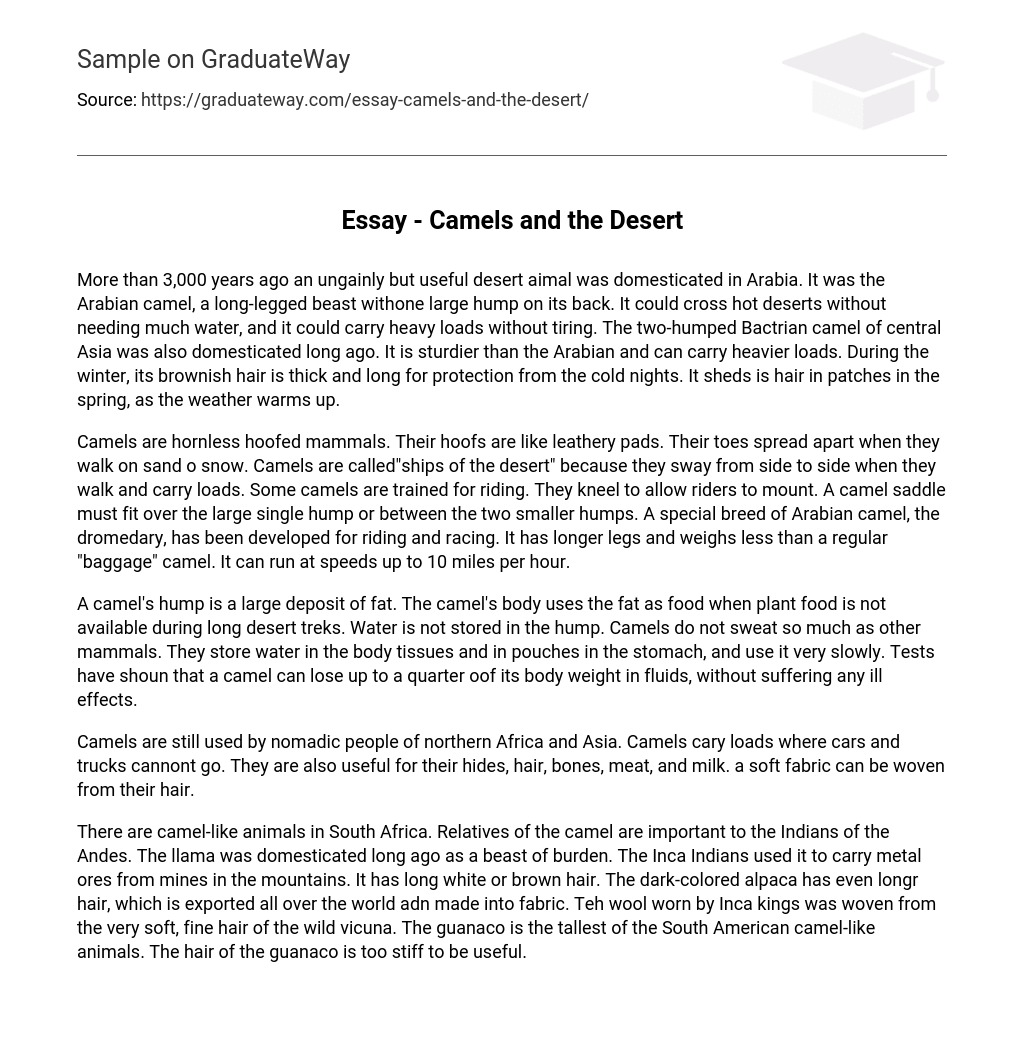Over 3,000 years in the past, Arabia witnessed the domestication of an ungainly but useful desert creature – the Arabian camel. This long-legged creature sported a single hump on its back and possessed remarkable abilities: it could traverse scorching deserts with minimal water intake and bear heavy burdens without exhaustion. Another variety, the two-humped Bactrian camel from central Asia, was also tamed in ancient times. This breed was stronger than the Arabian one and capable of carrying even heavier loads. During winter, their brownish hair grew long and thick to shield them from chilly nights. In the spring, as the weather warmed, the camels shed their hair patches.
Camels, which are mammals with hoofs and no horns, possess leathery pads as their hoofs. Their toes naturally separate when they traverse sand or snow. They are often called the “ships of the desert” due to their swaying motion and ability to bear heavy loads. Some camels undergo training for riding purposes and lower themselves to facilitate riders in mounting them. The saddle employed for a camel needs to be adjustable to accommodate either a single hump or two smaller humps. Furthermore, there exists a distinct breed of camel known as the dromedary that is selectively bred for riding and racing. It possesses long legs and weighs less than a regular “baggage” camel. This particular kind of camel can achieve speeds up to 10 miles per hour.
The camel’s hump, a substantial amount of fat used by the camel’s body for sustenance during extended desert journeys when plant food is scarce, does not serve as a water storage. Camels differ from other mammals in their minimal sweating rates and instead retain water within their body tissues and stomach pouches, consuming it gradually. Trials have demonstrated that camels can endure fluid loss up to 25% of their body weight without adverse consequences.
Camels continue to be utilized by nomadic populations in northern Africa and Asia for transportation purposes, as they can navigate terrain inaccessible to cars and trucks. Additionally, their hides, hair, bones, meat, and milk provide valuable resources. Their hair can be woven into a soft fabric as well.
There are camel-like animals in South Africa. Relatives of the camel are important to the Indians of the Andes. The llama was domesticated long ago as a beast of burden. The Inca Indians used it to carry metal ores from mines in the mountains. It has long white or brown hair. The dark-colored alpaca has even longer hair, which is exported all over the world and made into fabric. The wool worn by Inca kings was woven from the very soft, fine hair of the wild vicuna. The guanaco is the tallest of the South American camel-like animals. The hair of the guanaco is too stiff to be useful.





